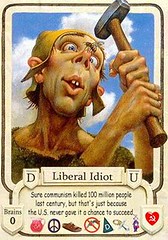The only gap that matters, pt. 3.5 - Yesterday, this page published a post analyzing data comparing per pupil educational spending and educational outcomes between school districts in New Jersey. The post was based on reporting from the New York Times, which also printed a graphic listing the districts that spent the most and the least per student. As stated repeatedly on this blog - despite educator protests to the contrary - there has been no demonstrated link between classroom spending and classroom performance. At the time of publication, the post correlated per pupil spending (PPS) and student performance on the New Jersey Assessment of Skills and Knowledge (NJ ASK) to make that point. Unfortunately, the comparison was at best an inference, as the spending data was from 2006-7, while the NJ ASK data was from 2004-5.
In order to establish an "apples-to-apples" comparison, it is important to take a look at data from the same year. (To make the comparison even more meaningful, we will look at percentages of students achieving proficiency or better on the 2003-4 NJ ASK.) If we take a look at Census Bureau PPS data for 2003-4, we can go back and look at PPS for specific districts with more than 10,000 students. For example, New Jersey's Brick Township and Toms River districts had PPS of $9,472 and $9,828 respectively, considerably less than the $12,981 spent on average in the Garden State for that year. However, 88.9 percent of Brick Township students and 88.5 percent of Toms River students scored "proficient" or better on the NJ ASK in reading, and 76.8 percent of Brick students and 76.1 percent of Toms River students were proficient or better in math.
By way of comparison, the Camden and Passaic school districts had PPS of $15,485 and $15,219 for 2003-4. Meanwhile, on the 2003-4 NJ ASK, only 58.5 percent of Camden students and 58.4 percent of Passaic students scored proficient or better in reading, while 53.7 percent of Camden students and a dismal 47.3 percent of Passaic students were found to be proficient in math.
As stated on multiple occasions, PPS is in no wise any sort of predictor of student achievement or educational outcomes. At best, it is a mechanism by which we may be able to enrich the educational experience for students, by way of extracurricular activities or after-school programs. But all of these things serve as no sort of substitute for prepared students, qualified teachers and involved parents. We are surely more likely to gain more of each by way of the use of vouchers for public education, as opposed to increasing funding for the status quo.
Wednesday, March 28, 2007
Subscribe to:
Post Comments (Atom)











.jpg)









No comments:
Post a Comment